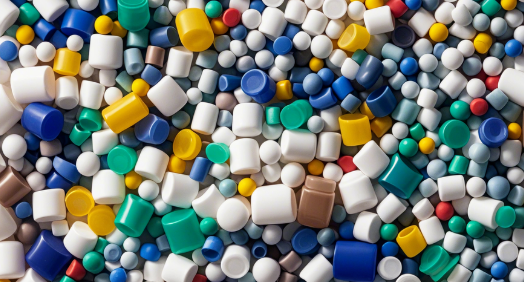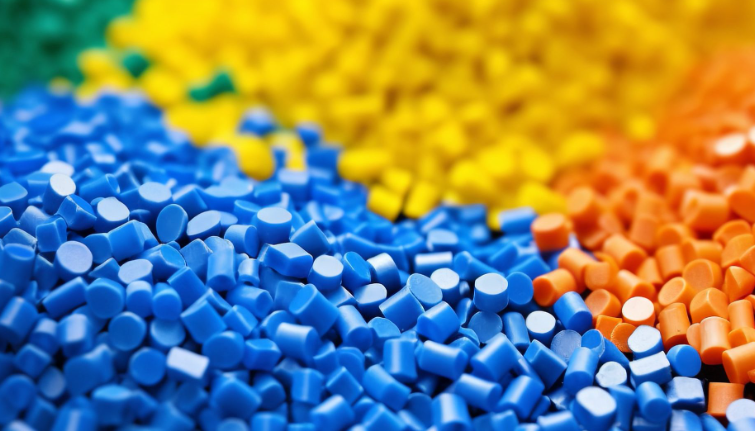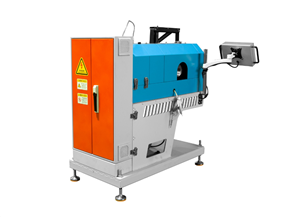The Top 10 Technology Trends in Plastics and Rubber in 2025(1~5))
Currently, the global rubber and plastics industry is undergoing in-depth transformation. The energy transition, green transformation driven by the "dual carbon" goals, and the integration of intelligent manufacturing and digitalization are jointly propelling the industry towards high value-added and sustainable development. Recently, the *Report on the The Top 10 Technology Trends in Plastics and Rubber in 2025* was released. Through an analysis of 118 innovative cases from 92 enterprises across 13 countries worldwide, it outlines a clear trajectory of technological innovation in the industry, providing important guidance for industrial development.
(1~5)
I. High-Value Recycled Plastics

Significance: As a key measure in practicing the circular economy of plastics, the high-value application of recycled plastics not only helps reduce carbon emissions in the industrial chain but also creates economic benefits for the plastic circular economy.
We have observed that the recycling channels for recycled plastics are showing a diversified trend:
Traditional physical recycling, with its high cost-effectiveness, occupies an important position in the field of recycled plastics.
Chemical recycling breaks through the bottlenecks of performance limitations and impurities in recycled materials, effectively handling the recycling and regeneration of mixed waste plastics and special plastics.
Recycled marine plastics, while reducing the burden on marine ecosystems, inject new vitality into the plastic circular economy.
The recycling and regeneration of elastomers have broken the traditional disposal methods of scrapping and incineration of elastomers, effectively reducing environmental pollution and resource waste.
II. Bio-based Plastics

Significance: With its unique environmentally friendly properties and technical advantages in renewable resources, bio-based plastics have become one of the key forces driving the sustainable development of the plastics industry.
We have observed that, thanks to the optimization of material formulations and technological innovations in production processes, the sources and applications of bio-based plastics are showing the following trends:
Non-food raw materials: In addition to traditional starch and cellulose, non-food substances such as lignin and waste oils and fats are becoming important sources of raw materials for bio-based plastics, effectively reducing resource competition between bio-based plastic production and food production.
Multi-dimensional improvements in strength and toughness, and diversified applications: Bio-based and petroleum-based degradable plastics show great application potential in various fields such as packaging, agriculture, medical care, and textiles. Meanwhile, bio-based non-degradable plastics not only cover packaging applications but also occupy an important position in fields such as construction, automotive, and electrical and electronic industries.
III. Low-Carbon Recycling and Recovery Processes

Significance: Low-carbon recycling and recovery processes are a key link in building a closed-loop plastic recycling system. By collecting, processing and treating waste plastics, they realize the transformation of waste into valuable resources, effectively reducing the accumulation of waste plastics in the environment.
We have observed that low-carbon recycling and recovery processes are showing the following development trends:
Intelligent sorting: In the sorting stage, with the help of sensors or programming algorithms, the type, color and composition of plastics can be identified quickly and accurately, with a sorting accuracy of over 95%. This effectively improves the recovery rate and recycling purity of waste plastics.
Integration of crushing, cleaning and pelletizing processes: The integration of waste plastic crushing, cleaning and pelletizing processes closely connects previously scattered links, forming a continuous and efficient recycling process, and realizing the efficient use of time and space.
Bottle-to-bottle recycling at the same grade: This reduces the downcycling of plastic bottles during recycling, enabling plastics to circulate within their highest-value application fields. In addition, as bottle-to-bottle recycling has higher requirements for recycling technologies and equipment, it is also conducive to promoting industrial upgrading and innovation in the plastic recycling industry.
IV. Skin-Friendly Soft Materials

Significance: Skin-friendly soft materials such as thermoplastic elastomers (TPEs) and liquid silicone rubber (LSR) play an important role in enhancing product design flexibility, usage comfort, safety, and other aspects.
We have observed that these materials are deeply penetrating multiple fields including green intelligent mobility, medical applications with high biocompatibility, and light luxury and fashion.
Green Intelligent Mobility: Thermoplastic elastomers can help automotive interior and exterior trim achieve lightweighting and functional integration, enhancing comfort. Liquid silicone rubber plays a key role in expanding high-performance sealing applications, deepening its use in electrical and electronic fields, innovating applications in optical components, advancing micro-molding and precision manufacturing, and improving component wear resistance.
Medical Applications with High Biocompatibility: Thermoplastic elastomers and liquid silicone rubber play important roles in high-end interventional devices, minimally invasive surgical instruments, medical robot components, medical catheters, wearable medical devices, and medical imaging components. Additionally, liquid silicone rubber can also serve as a soft tissue filler material, used in aesthetic medical procedures such as facial wrinkle reduction and depression filling.
Light Luxury and Fashion: Thermoplastic elastomers can be used to improve the comfort of fashion products such as shoe uppers, soles, and bags. Liquid silicone rubber is mostly applied in wearables, beauty devices, phone cases, and eyewear accessories, enhancing user experience.
V. Lightweight, Functional Materials and Additives
Significance: From high-precision aerospace, booming new energy vehicles, electrical and electronic products, medical device consumables to the emerging low-altitude economy, lightweight materials, functional materials and additives play a vital role in helping products reduce weight, enhancing product stability, and improving environmental value.
We have found that these materials are continuously undergoing iterative innovation in the following performance characteristics:
High performance: High strength, high toughness, fatigue resistance, high heat resistance and thermal stability, chemical resistance, high conductivity and dielectric properties, high transparency and low haze, etc. High-performance materials can not only adapt to harsh and complex application environments but also enable the research, development and manufacturing of high-end products, and even industrial upgrading.
Specialization: Through precise formula design, they meet the application needs of specific products and optimize key performance indicators of products.
Environmental friendliness: In addition to using recycled plastics and bioplastics, characteristics such as halogen-free flame retardancy, low VOC (volatile organic compounds), and recyclability significantly enhance the environmental value of products.
In addition, various composite materials such as carbon fiber reinforced composites and glass fiber reinforced composites have also achieved technological innovation breakthroughs in lightweight and high performance. They not only help reduce product weight but also significantly enhance properties such as high temperature resistance, chemical corrosion resistance, and electrical/thermal conductivity, achieving the integration of multiple functions.




